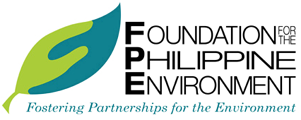News
FPE Moves to Help Rehab Damaged Ecosystems in Guiuan, Gigantes Islands
Posted on November 30, 2014By Jonathan L. Mayuga. Published in Business Mirror, November 29, 2014
THE Foundation for Philippine Environment (FPE) has set in place programs to boost rehabilitation of damaged ecosystems and build climate and disaster-resilient communities in Gigantes Islands and Guiuan, in the Visayan region.
The group recently launched a five-year post-Supertyphoon Yolanda rehabilitation project to help restore 20 coral reef sites and 50 hectares of mangrove forests in Guiuan and Gigantes Islands over a period of five years.
FPE’s help is anchored on damage-assessment strategies focusing on biodiversity conservation and sustainable development; and disaster-risk reduction and management in the areas.
Gigantes Islands has a potential to be an ecotourism destination. It has beaches and sandbars, limestone cliffs and aquamarine waters.
Located at the northeast coast of Panay, Gigantes Islands belongs to a region of 128 key biodiversity areas for 419 endemic species of fish, reptiles, amphibians and mammals, 209 of which are threatened.
Two trigger species have been listed as critically threatened and endangered, with four falling into the irreplaceable criterion. At the height of Yolanda (international code name Haiyan), it was reported that caves, where endemic species of geckos and frogs thrive, were used as refuges. The extent of disturbance to these endemic species and the caves is now being determined by FPE and Dr. Arvin Diesmos of the National Museum of the Philippines.
On the other hand, in the aftermath of the typhoon, the already fragile state of biodiversity in the Guiuan has become more severely compromised. Much of the islands’ habitats have been totally destroyed. Similarly, corals have been crushed by the storm surge.
According to FPE, a site inspection by Dr. Jonathan Anticamara through a research supported by FPE, revealed that coral reefs were also wiped out in a few islands severely impacted by Yolanda’s wind.
Reefs mainly comprised of branching coral species were greatly devastated. Damage was so intense that flamentous algae took over most of the reef cover according to Anticamara’s research report in 2013.
The FPE is now implementing ecosystem-rehabilitation measures in these areas.
FPE launched on November 25, during simple rites at the Astoria Plaza Events Place in Pasig City, three researches that are now available as baseline for ecological restoration.Rapid Community-based Assessment and Planning of Mangrove and Beach Forest by the Southeastern Samar PO Consortium; “Status Assessment of the Population and Habitat of Threatened Endemic Limestone Karst Frogs and Lizards of Gigantes Islands” by Diesmos, and; The Need to Quantify and Understand Reef Biodiversity in the Philippines for the Benefits of Filipinos and Assessing the Impacts of Supertyphoon Yolanda on Coral Reef Diversity in Eleven Selected Reefs Sites of Eastern Samar by Anticamara.
Jessie Manuta, an expert adviser of FPE and former trustee of FPE, is also developing a Framework and roadmap on Climate Change Adaptation & Disaster Risks Reduction and Management in FPE-assisted communities in Guiuan and Gigantes. According to FPE Chairman and CEO Liza Ozorio, the ecosystems need to recover, too, from the onslaught of Yolanda last year.
Aside from the provision of food and basic need, reactivation of government services and the resumption of socioeconomic activities, she said there is a need to restore the health of what was damaged by the super typhoon. Fishermen and farmers, she said, have always depended on the sea and arable soil. She said boats and seeds will have to wait until the fishes find a home in restored mangroves and corals, and the trees make the land fertile once again.
Read More:
- Executive Director Dr. Jerome L. Montemayor carried the banner of the Foundation for the Philippine Environment and the larger civil society during the SBSTTA 26 and SBI 4 meetings in Kenya
- Call for Proposals for the SGP-8 Country Programme Strategy
- #Y4B Ambassadors: JOEPET JEROME S. JARO
- #Y4B Ambassadors: MELLARD MANOGURA
- #Y4B Ambassadors: MARY JANE P. MAGAN
- #Y4B Ambassadors: SHRI TAHANIE B. MACAUMBAO

 DISPLAY CALENDAR
DISPLAY CALENDAR
 Read Policy Briefs
Read Policy Briefs
 View Our Partners
View Our Partners
 Access Grants MIS
Access Grants MIS
 Login to Webmail
Login to Webmail